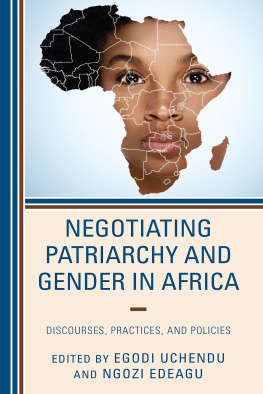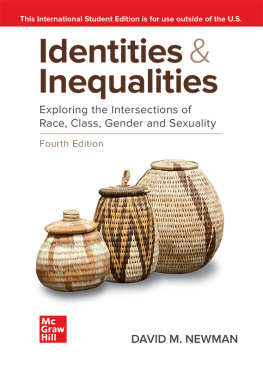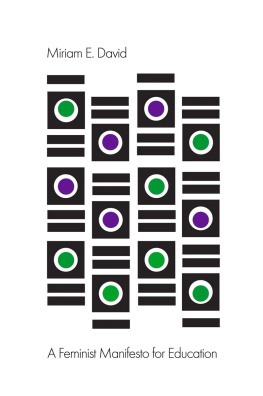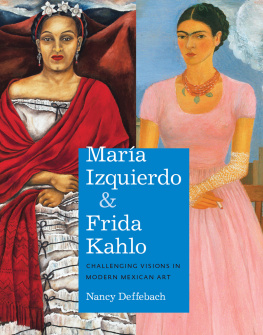E xploring C onceptions and
D iscourses of G ender,
S exuality and P regnancy
A mongst M exican
A dolescents
Miriam Weil-Behar
Austin Macauley Publishers
2021-02-26
Exploring Conceptions and Discourses of Gender, Sexuality and Pregnancy Amongst Mexican Adolescents
About the Author
Miriam Weil-Behar is a child and adolescent psychologist from Mexico with a BA in clinical psychology from the Anahuac University, two Master of Education degrees in special education: emotional disturbances and learning disabilities from The American University, a Certificate of Advanced Studies (CAS) in children and adolescents at risk from Harvard University and an MPhil in education from University College London.
She has worked at the Mexican Children Hospital, Federico Gmez, in Mexico City, at The Psychiatric Institute of Washington, in Washington D.C., at the Child and Family Foundation with children from incarcerated mothers, at the General Hospital, Dr. Manuel Gea Gonzlez, and in her private practice for over 30 years, all in Mexico City.
Dedication
This research is dedicated to my beloved sister, Deborah, who sadly lost her battle against cancer and did not have a chance to see my work completed and share this moment with me. However, as the following excerpt from her writing shows (taken from the introduction to the exhibition of her art work in Mexico City in 1998), she knew the struggles that a woman often has to go through to find her identity while resisting strong gendered dominant discourses.
States of Woman
I want to be all that I am capable of becoming
Katherine Mansfield
This series of images was made over ten years. Its explanation can only be a posterior reflection. The meaning of these images is profoundly related to my experience of being a woman and, therefore, although they may amount to no more than a diary, it is possible that the spectator will find in them something familiar that will bring back feelings of anger or reassurance.
I telephoned in London to reserve my ticket to come to Mexico, and when I gave my name, I was asked: Miss or Mrs? Although in English there now exists a neutral term Ms, almost unpronounceable, it is not commonly used, as it has connotations of rebellion or marginality. I always found it difficult to answer that question. Sometimes I answer Mrs so that a man is implied, something which at times gives more respectability. Most of the times, I answer whatever comes first. This time I hesitated, truly confused, and said: I dont knowwhatever, to which the person said, Are you married? What does that have to do with buying an airline ticket? Thats a rather personal question, dont you think?
Miss or Mrs, virgin or possessed, Madonna or prostitute, good mother or professional, strong or feminine These dualities exist and it is not women who have chosen the labels. Would it be a strategy of divide and conquer? After all, what can be categorised can be dominated, and the person who allows his/herself to be labelled accepts the established system. I feel that we, as women, have lost so much of our identity that the fabricated images that surround us replaces it, offering and assigning us partial identities that are always changing.
Why do most of my figures have no heads? I suppose it is because I have always been fascinated by the beheaded Greek and Roman statues which have been rescued from centuries of abuse. The body with all as beauty and defying strength, like that of the Victory of Samothrace, has survived, and even without its head, that stolen piece of her identity, there is still the belly which gives life and the breast that perpetuate it. Even without head or a make-up, these figures appear after centuries of burial and there is no doubt of their existence or their wholeness or even of their sex.
On the other hand Virgins have been robbed of their sex, and they are idealised precisely because of this. Beautiful faces without a womans body. Woman as object of adoration in her perfection and impotence.
My experience of being a woman is one of divisions, of constant battles against definitions that want to limit and control. This series reflects the feeling of fragmentation of my identity as a woman, something I have not yet resolved. Who can say they have?
Deborah Weil
Copyright Information
Miriam Weil-Behar (2021)
The right of Miriam Weil-Behar to be identified as author of this work has been asserted by the author in accordance with section 77 and 78 of the Copyright, Designs and Patents Act 1988.
All rights reserved. No part of this publication may be reproduced, stored in a retrieval system, or transmitted in any form or by any means, electronic, mechanical, photocopying, recording, or otherwise, without the prior permission of the publishers.
Any person who commits any unauthorised act in relation to this publication may be liable to criminal prosecution and civil claims for damages.
A CIP catalogue record for this title is available from the British Library.
ISBN 9781528919715 (Paperback)
ISBN 9781528962803 (ePub e-book)
www.austinmacauley.com
First Published (2021)
Austin Macauley Publishers Ltd
25 Canada Square
Canary Wharf
London
E14 5LQ
Acknowledgement
There are many people who have kindly helped me in the completion of this work.
In particular, I would like to extend my heart-felt gratitude to Professor Jessica Ringrose, who was instrumental in developing my thinking and learning while continuously providing me with encouragement and motivation as I pulled this work together.
I owe special thanks to The General Hospital, Dr. Manuel Gea Gonzlez, in Mexico City, with whom I was able to conduct my research. Above all, I am deeply indebted to all the adolescent girls and boys who participated in the study and were so generous with their time and sharing of their personal, often intimate, experiences. I truly hope I have done them justice in this work.
I am grateful to my parents who constantly supported me, despite the time the writing of this book took.
I would also like to acknowledge my uncle, David Bahar (sadly now deceased), who so kindly helped me with the translation of the research instrument, as well as Ricardo Amor and Teresita Miguel, who so patiently helped me with the statistical analysis.
A special thanks to my dear friend, Richard Coldwell, who was always there to help me out during rough times.
Last but not least, I would like to thank Marisa Belausteguigoitia, director of the gender studies program and Joel Estudillo, coordinator of the Rosario Castellanos Library of the gender studies programboth from the National Autonomous University of Mexico (UNAM)for their assistance with many of the references needed for this work.











